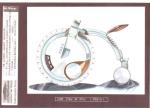
Dilip Chhabria: the man who challenged conformism
The lyrics of a famous song by the band, Vitamin C, go something like this
Do, do do what, do do what, do do do whatchulike
Whatever, whatever, whatever you choose,
Everybody wants to tell you what to do,
Whatever, whatever, whatever you do,
This is your life to lead
Make sure you’re doing what you please
Respect yourself, express yourself
Let yourself go, you know, there’s nothing you can’t do
And that’s exactly what Dilip Chhabria did. He did what he wanted to do. He chose to go to the Art Center College of Design, Pasadena to pursue Transportation Design, his dream, his life. At a time when medicine and engineering were the safe career choices, ‘respectable choices’, he went after something completely unimaginable, never bothering about what was acceptable and what wasn’t. He did what his heart told him to.
Here I feel the need to quote from the Samsonite advertisement:
‘In the journey of life, there are two roads to choose from: The first road is an easy one with street signs and shortcuts. It has the approval of the world. The second road is much harder, full of hardships and obstacles with no hand to hold or map to guide. But when you walk on it, you make way for millions of others. Which road are you on?’
Dilip Chhabria chose the second road, and has today made way for thousands of automobile enthusiasts. He has showed them that, yes, being an automobile designer is a great career option. Today Dilip Chhabria’s design firm, DC Designs, has over 650 designs on road, which is no mean achievement. DC Designs is also the largest auto accessory maker in the country. Among his clients are big movie stars, politicians, and top business honchos.
About his job, DC says, ‘I quite like my job as I’m able to dream with other people’s money.’ He is by far the biggest and the most famous automobile designer in India today, and has put us on the world map as a design-centric, design-capable nation.
But who’s going to carry on the legacy? What will be the future of automobile design in India?
The answer is – Big. Bright. Beautiful, and how?
Over the years DC has had several automobile enthusiasts ask him the same question: I want to be an automobile designer. Can you please guide me?
There are many others with such ambitions who have little idea about how to get there. Fair enough. While there are several hundred design schools around the world teaching all forms of design, there are only a handful that teach Transportation or Automotive Design.
A serious dearth of talented automobile designers, and increasing interest among young aspirants to learn automobile designing, gave birth to DYP-DC Center for Automotive Research and Studies, an association between the DY Patil Group, the pioneers in higher education and Dilip Chhabria, the iconic automobile designer.
In the words of Mr. Dilip Chhabria, ‘DYPDC College is my personal passion, and I am going to drive this institute to make sure it produces the best automobile designers. Presently there are no credible programs that plug this gap between demand and supply of world-class automobile designers. DYPDC College is here to fill that void. Automobile Designing is a hot-hot field. It’s an exciting career choice.’
On his role he says: ‘I’ll be involved with the program on three levels. First: I’d be on the jury and act as the chief mentor for my students. Second: I’d be in close contact with the faculty and constantly try and reinvent the curriculum, teaching methods, keeping it fresh and dynamic. Third: I believe like love, design is a matter of heart. The institute will aim to develop skills that embody this philosophy, coupled with business and manufacturing dynamics.’
‘DYPDC College is a boon in view of the impending explosion of automotive growth in our part of the world.’
Why are dreams so important? They give you the courage to think beyond convention, to fling your short-sighted glasses away and allow you to take in the bigger picture. Everyone dreams, but only those who go after them and persevere, make them come true.
So dream and dream big and do whatever you want to do in life. Be it automobile design, acting, singing, dancing, writing, directing – just jump in and have the nerve to keep on walking on that road even when it seems impossible to take one more step. Do it. And it will happen.
I would sign off with this wonderful quote:
“To dream anything that you want to dream. That’s the beauty of the human mind. To do anything that you want to do. That is the strength of the human will. To trust yourself to test your limits. That is the courage to succeed.”
– Bernard Edmonds



